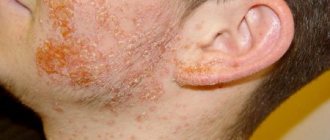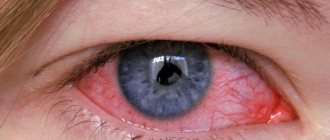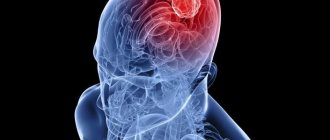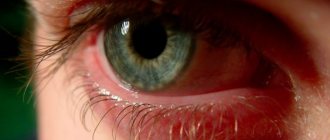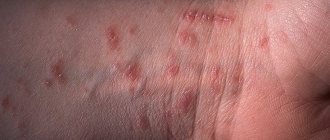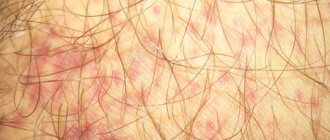A separate group of non-psychotic level disorders includes pathological conditions with mild changes in the mental sphere - neuroses. All disorders of this group can be described as debilitating neuropsychic weakness, the development and course of which, as well as methods of compensation, are determined by the action of psychogenic factors.
There are various divisions of neuroses into separate types. The most common type of neurotic disorder is neurasthenia , also called asthenoneurotic syndrome or asthenic neurosis. In some sources, neurasthenia, due to the similarity of symptoms, is equated to chronic fatigue syndrome, although according to the latest scientific research, these two psychogenic conditions have completely different pathogenesis and require different treatment.
What is neurasthenia? Description
Neurasthenia implies severe depletion of the nervous system , which is clinically accompanied by a number of specific symptoms. The leading symptoms of asthenic syndrome are a decrease in endurance to physical and mental stress, rapid fatigue from habitual activity, increased irritability, instability and rapid mood swings. Neurasthenia manifests itself with unpleasant somatic and neurological symptoms: cephalalgia, muscle pain of a psychogenic nature, autonomic dysfunction, and disruptions in sleep-wakefulness.
Neurasthenia is based on a breakdown of higher nervous activity, which is a reversible phenomenon regardless of the intensity and duration of the symptoms demonstrated. Neurasthenia differs from psychoses in the complete absence of psychotic syndrome: manifestations of personality disorders do not reach the level at which a critical attitude towards one’s condition is lost and the individual’s adaptation to society is disrupted. This disorder occurs without any signs of psychosis and the person is fully aware of his illness. Neurasthenia is subjectively perceived by a person as a severe pathology. This asthenic disorder can significantly worsen the quality of life of an individual.
Unlike psychopathy and psychosis, neurasthenia occurs after a real psychotraumatic situation, which is combined with excessive overload of the body and a lack of physiological amenities, for example: regular lack of sleep. The development of asthenic syndrome is facilitated by viral and bacterial infections, chronic intoxication of the body and other painful conditions of organs and systems.
Asthenic neurosis is determined with equal frequency in representatives of both sexes, while the overwhelming number of patients are mature people of working age over 25 years old. In women, the symptoms of neurasthenia are much more severe; in them, this disorder is often aggravated by more serious pathologies. In the last decade, neurasthenia has often been recorded in children and adolescents who are overly busy with educational activities, extracurricular sports or intellectual activity.
Most of the people who have been diagnosed with “neurasthenia” are residents of large cities. However, to say that asthenic neurosis is the result of a busy life in industrial centers is not entirely fair, since until now the mentality of village residents is accustomed to attributing the symptoms of asthenic disorders to banal passing fatigue. In addition, not every village hospital has a vacancy for a neurologist and psychiatrist who can carry out competent diagnostic measures and differentiate this type of neurosis from other painful conditions.
Stages of development of asthenic neurosis
In children, neurasthenia is most often associated with problems in learning, conflicts with parents who make excessive demands. When a child is faced with physical and mental overload, he realizes that under no circumstances can he achieve the results that are expected of him. This leads to a malfunction of the nervous system.
There are three stages of disease development:
- neurotic reaction;
- neurotic conditions;
- neurotic development (disorder) of personality.
Causes of neurasthenia
The multifactorial model of the etiological causes of neurasthenia has received the greatest recognition today. This design is based on a comprehensive study of various factors, the influence of which initiates the onset of asthenic neurosis.
Among the most likely causes of the disease is a group of biological factors. Among them, unfavorable heredity is the presence in the family history of neurotic and psychotic disorders, which were recorded in close relatives of the patient. It also shows the difficult course of pregnancy of the patient’s mother, the serious infectious diseases she suffered during this period, the complex course of labor and birth injuries of the baby. Among the biological reasons is the innate human constitution: features of the functioning of the nervous system.
The psychological foundations of neurasthenia include premorbid personality traits. A significant reason for the development of pathology is psychological trauma received in childhood. An extremely negative factor that creates the basis for the formation of neuroses is an individual’s prolonged stay in a traumatic situation. The sudden onset of the disease is often recorded after intense, sudden stress, the circumstances of which are extremely relevant and important for the person.
Scientists also name social causes of asthenic disorder. In this group: features of the psychological climate in the parental family, conditions of upbringing and growing up . The patient’s social environment also plays a significant role : the person’s social circle, his sphere of interests, the degree of satisfaction of personal aspirations.
Treatment methods
Before proceeding to therapy, it is necessary to undergo a full medical examination. This is primarily due to the fact that neurasthenic symptoms can accompany other serious diseases associated with mental health, endocrine and nervous systems. In some cases, neurasthenia is provoked by infectious diseases. If other highly specialized doctors have ruled out the presence of a disease related to their profile, a psychotherapist is involved in the treatment.
After the diagnosis is established, the patient requires complete emotional peace, absence of physical and intellectual stress for the entire recovery period. In most cases, complex therapy is required, including medication and psychotherapeutic approaches.
The task of a psychotherapist is to analyze the teenager’s condition, help in revealing the internal conflict and get rid of it. In some cases, in the early stages of the disease, it is possible to do without drug treatment, which involves prescribing nootropics to stabilize the brain, muscle relaxants to get rid of headaches, as well as tranquilizers to reduce the child’s daytime nervousness. In most cases, children are prescribed vitamin complexes to improve their overall health.
Sometimes consultation with a specialist is necessary for parents if one of the causes of the disease is an unhealthy atmosphere in the family. It will not be possible to completely get rid of neurasthenia if the child is subjected to emotional pressure both at school and at home. He should be isolated from constant stress, which a change of environment can help with. In some cases, additional physiotherapeutic procedures are prescribed. As an additional measure, you can try aromatherapy with soothing oils.
Neurasthenia responds well to treatment: more than 3/4 of those who contact a specialist quickly return to a normal mental and physical state and no longer encounter this disease in the future.
Forms of neurasthenia
In clinical practice, neurotic disorders are conventionally divided into three separate forms:
- hypersthenic (excitable);
- irritable weakness;
- hyposthenic (inhibitory).
All these forms reflect the severity of neurasthenia, being specific stages of this disorder. Since asthenic neurosis is characterized by a gradual increase in the intensity of symptoms, that is, aggravation of the pathology, the above forms convey the sequence of phases of the disease. However, in many patients the painful condition is fixed in one specific form: at the first or second stage, that is, there is virtually no negative dynamics. For this reason, the diagnosis is often formulated as follows: hypersthenic or hyposthenic neurasthenia, asthenic neurosis in the form of irritable weakness.
Drug therapy and psychotherapeutic assistance
As for psychotherapy, designed to help a sick person eliminate the cause of his condition, it is effective both as individual conversations with a specialist and as group and family therapy.
A psychiatrist, based on the clinical picture of a particular patient, may prescribe:
- benzodiazepine tranquilizers, which will have a sedative (calming) effect, including reducing excitability and anxiety;
- small doses of antipsychotics (in extreme cases);
- antidepressants (if depression develops as a result of the disease).
Of course, side effects may occur during psychotropic therapy, so choosing a suitable regimen may take some time. In severe cases, it is carried out in a hospital setting.
In addition to psychotropic drugs, it is advisable to take general strengthening vitamin and mineral complexes, and in case of apathy, activating herbal tinctures with psychoactive properties, for example, Eleutherococcus or Chinese lemongrass.
Prognosis and prevention of the disorder
If all recommendations are followed, the prognosis for asthenic neurosis is positive and complete recovery is highly likely. When provoking chronic factors continue to influence the patient and cause further crises, the disorder can last for decades and significantly affect the quality of life, therefore, when its first symptoms appear, it is worth taking the necessary measures immediately.
The best prevention is social and psychohygienic measures - the creation of favorable living and working conditions, rational career guidance, avoidance of emotional overload and occupational hazards.
Symptoms of certain forms of pathology
The initial phase of the disease – the hypersthenic form – is the most common type recorded in clinical practice. The main symptoms of this stage: increased excitability of the central nervous system, excessive irritability and nervousness.
The individual exhibits inappropriately strong reactions to a minor stimulus. The slightest noise, sharp and loud sounds, bright lights, ticking clocks, creaking doors make him nervous. A person is unbalanced by the presence of people, their conversations and movements. For a random and insignificant reason, a person experiences outbursts of irritation and anger. The patient feels that he cannot control his emotions and restrain his impulses. He is capable of offending and offending others, while he himself does not understand the nature of his aggression.
No less pronounced symptoms of the hypersthenic form: fussiness, impatience, impetuosity of actions. A patient with neurasthenia cannot wait, strives to do everything at once, and grabs onto several things at the same time. However, the individual's performance deteriorates significantly. At the same time, the decline in labor productivity occurs not due to rapid fatigue, but as a result of distraction, lack of concentration, and inability to concentrate on the action being performed. Having started some activity, a person cannot be collected for a long time, because he is constantly distracted by external stimuli.
The leading symptoms of neurasthenia also include significant disruptions in the sleep-wake pattern. During the daytime, the individual is lethargic and drowsy, and at night he sleeps restlessly with sudden awakenings. He is overcome by nightmares, the plot of which often reflects the real troubles of a person. With neurasthenia, both the process of falling asleep and the stage of awakening change to some extent. In the evening hours the subject cannot fall asleep for a long time. In the morning he either wakes up much earlier than usual, or wakes up very late with a feeling of heaviness and weakness.
Constant symptoms of neurasthenia are debilitating headaches of a squeezing, constricting nature. There is even a special name for cephalgia - “neurasthenic helmet”. When tilting and turning the head, pain spreads to the back area, as if going down along the spine. The intensity of pain increases after physical activity or mental stress.
The intermediate stage of the disease is called “irritable weakness.” This phase reflects the clinical essence of neurasthenia: a combination of increased irritability with a very rapid depletion of the body's resources. During this period, sudden attacks of irritation reach their maximum intensity. Excessive excitability is accompanied by tearfulness that is unusual for a person. From outbursts of anger, the patient easily moves to tears, arising due to the fact that he is unable to overcome the obsessive feeling of “global” discontent. The lability of mood is clearly expressed: cheerfulness is quickly replaced by a depressive state. There are signs of mental exhaustion: the individual becomes lethargic, gloomy, and apathetic to everything that happens.
Appetite worsens or disappears completely. A variety of digestive problems appear: constipation or diarrhea, heartburn and belching. Among the vegetative symptoms, a frequent companion of neurasthenia is: fluctuations in blood pressure, increased heart rate, and pulse lability.
Sympathoadrenal crises are often recorded: the appearance of “floaters” before the eyes, a feeling of instability and unsteadiness, a feeling of softness in the limbs. At the slightest excitement, a person blushes or turns pale, feels bouts of chills or hot flashes. There are frequent complaints of frequent urge to urinate, which is observed with anxiety. Attraction to the opposite sex is significantly reduced; men may experience problems with potency.
The third stage of neurasthenia - the hyposthenic phase - is characterized by lethargy and weakness, all-consuming apathy, depression and gloomy mood. A person cannot motivate himself to perform any actions, since all his thoughts are focused on unpleasant somatic sensations. However, in the emotional background there are no affects of melancholy, and pathological anxiety is not observed.
Prevention
There are a number of measures that can prevent the development of neurasthenia:
- maintaining the correct daily routine;
- sufficient sleep duration;
- balanced diet;
- adequate level of intellectual and physical activity;
- regular rest;
- a change of scenery;
- sports, active lifestyle;
- rejection of bad habits;
- taking complex vitamin preparations, especially those containing B vitamins.
The recovery period lasts from one to four weeks, depending on the severity of the condition.
Asthenic neurosis can significantly worsen a person’s quality of life. That is why it is important to begin treatment for this disease when its first signs appear. Therapy should be comprehensive and correspond to the severity of clinical manifestations.
Diagnostics
The diagnosis of asthenic neurosis occurs under the guidance of a specialized specialist.
Helpful information
During a face-to-face conversation with the patient, the psychiatrist collects complaints and medical history for the purpose of differential diagnosis of the pathology with other diseases that have a similar clinical picture.
This will also make it possible to choose the most effective treatment tactics. Additional methods for examining patients are:
- ultrasonography;
- computed and magnetic resonance imaging;
- rheoencephalography;
- electroencephalography;
- radiography;
- electrocardiography.

